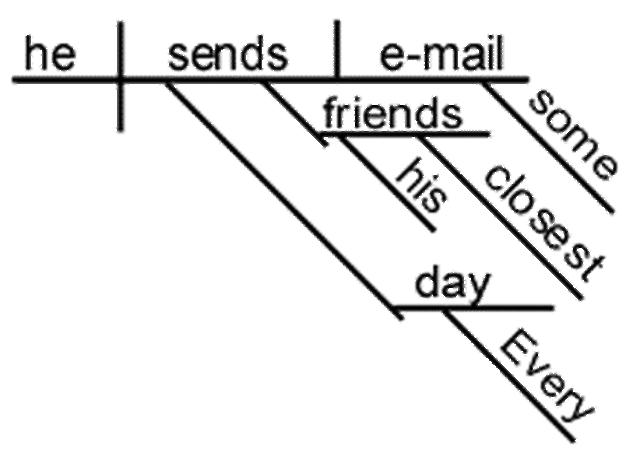From Making a Living Writing:
In the realm of language and literature, euphemism serves as a linguistic tool that softens the impact of potentially harsh or sensitive words or phrases. It involves substituting a mild or indirect expression for one that might be considered too blunt, offensive, or uncomfortable in certain contexts.
In this article, we will be exploring various ways to use euphemisms in your writing and give some euphemism examples.
Euphemism is prevalent in both spoken language and writing, playing a crucial role in diplomacy, etiquette, and sensitive communication.
Let’s dive in so you can figure out how to use this to level up your writing.
What Is A Euphemism?
Let’s start with the Dictionary definition of euphemism:
A mild or indirect word or expression substituted for one considered to be too harsh or blunt when referring to something unpleasant or embarrassing.Dictionary.com definition
Euphemism is a powerful linguistic tool used in writing to navigate sensitive topics with tact and diplomacy. It allows writers to convey information effectively while maintaining decorum and respecting cultural norms.
By understanding and utilizing euphemisms appropriately, writers can enhance the clarity, sensitivity, and aesthetic appeal of their communication.
However, it’s important to use euphemisms cautiously, ensuring that they serve their intended purpose without sacrificing clarity or honesty in communication.
It can be hard to figure out when and how to use them, but let’s deep dive more reasons why you should use them.
Why Use Euphemisms in Writing?
The use of euphemism in writing serves several important purposes:
Politeness and Sensitivity
Euphemisms allow writers to address delicate or distressing topics with greater sensitivity, showing respect for the audience’s feelings. For instance, using “passed away” instead of “died” can soften the impact of discussing death.
Avoidance of Offense
Euphemisms help writers navigate potentially offensive or controversial subjects without causing unnecessary discomfort or conflict. For example, saying “physically challenged” instead of “disabled” is considered more respectful.
Cultural and Social Norms
Different cultures and societies have varying levels of acceptance toward certain topics. Euphemisms adapt language to align with prevailing cultural sensitivities.
Adding imagery
Certain euphemisms can help give imagery where plain language won’t do the same trick.
Professional Communication
In professional settings such as business or medicine, euphemisms are used to convey information objectively while maintaining a professional tone. Terms like “downsizing” for layoffs or “in a meeting” for unavailable can be less jarring.
Aesthetic Appeal
Euphemisms can enhance the literary quality of writing by adding nuance and subtlety. They can make writing more elegant and sophisticated.
Used to define time
You can help frame a story around its time period when you use certain euphemisms. You can insert ones that were common during that time period, especially in dialogue.
Euphemism Examples in Writing
Each of these examples showcases how euphemisms can be used to soften the impact of words or phrases, making them more palatable or less confrontational depending on the context.
- Senior citizen – Euphemism for an elderly person.
- Letting you go – Euphemism for firing someone from a job.
- Correctional facility – Euphemism for prison.
- Pre-owned – Euphemism for second-hand or used (e.g., pre-owned car).
- Ethnic cleansing – Euphemism for genocide.
- Visually impaired – Euphemism for blind.
- Enhanced interrogation techniques – Euphemism for torture.
- Domestic engineer – Euphemism for housewife or homemaker.
- Revenue enhancement – Euphemism for tax increase.
- Sleeping together – Euphemism for sexual relations.
- In a better place – Euphemism for deceased.
- Economical with the truth – Euphemism for lying or being dishonest.
- Collateral damage – Euphemism for civilian casualties during military operations.
- Revenue shortfall – Euphemism for financial losses.
- Correctional facility – Euphemism for prison.
- On the streets – Euphemism for homelessness.
- Restroom – Euphemism for toilet or bathroom.
- Developmentally delayed – Euphemism for intellectually disabled.
- Life partner – Euphemism for spouse or significant other.
- Special needs – Euphemism for disabilities or challenges.
- Gentleman’s club – Euphemism for strip club.
- Vertically challenged – Euphemism for short in height.
- Under the weather – Euphemism for feeling unwell.
- Alternative facts – Euphemism for falsehoods or lies.
- In a family way – Euphemism for pregnant.
- Revenue enhancement – Euphemism for tax increase.
- Comfort woman – Euphemism for a woman forced into sexual slavery.
. . . .
Examples of Euphemisms in Classic Literature
- Brave New World by Aldous Huxley – In this dystopian novel, the term “soma” is used as a euphemism for a drug that induces euphoria and tranquility in the society, representing a form of escapism and control.
- 1984 by George Orwell – The term “doublethink” serves as a euphemism for the act of simultaneously accepting two contradictory beliefs, reflecting the totalitarian regime’s manipulation of language and truth.
- Animal Farm by George Orwell – The phrase “re-education” is used as a euphemism for propaganda and indoctrination in the novel, highlighting the manipulation of language by those in power.
- The Catcher in the Rye by J.D. Salinger – The protagonist, Holden Caulfield, frequently uses the phrase “phony” as a euphemism to describe people he perceives as insincere or inauthentic.
- Harry Potter series by J.K. Rowling – The term “He-Who-Must-Not-Be-Named” is a euphemism for the dark wizard Voldemort, reflecting the fear and reluctance of characters to directly name or confront him.
- Shakespeare’s works – Shakespeare often used euphemisms creatively in his plays. For instance, in Macbeth, the phrase “knocking at the gate” euphemistically refers to the arrival of Macduff’s army to challenge Macbeth’s rule.
Link to the rest at Making a Living Writing
